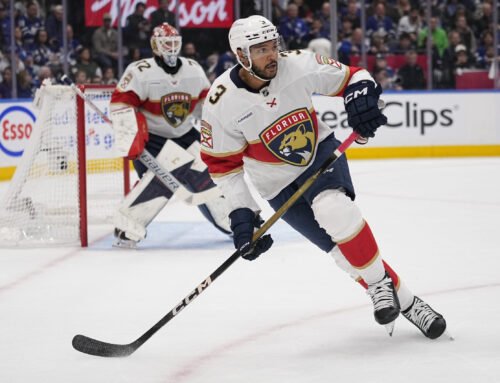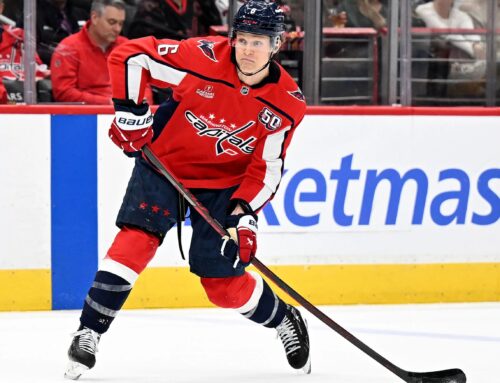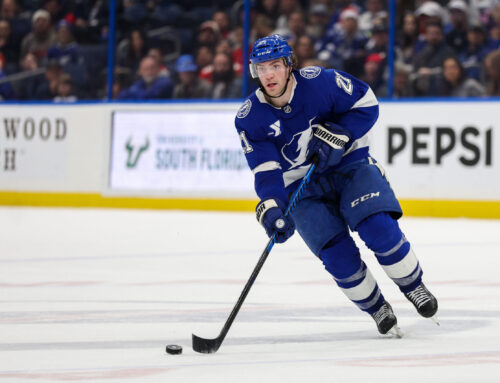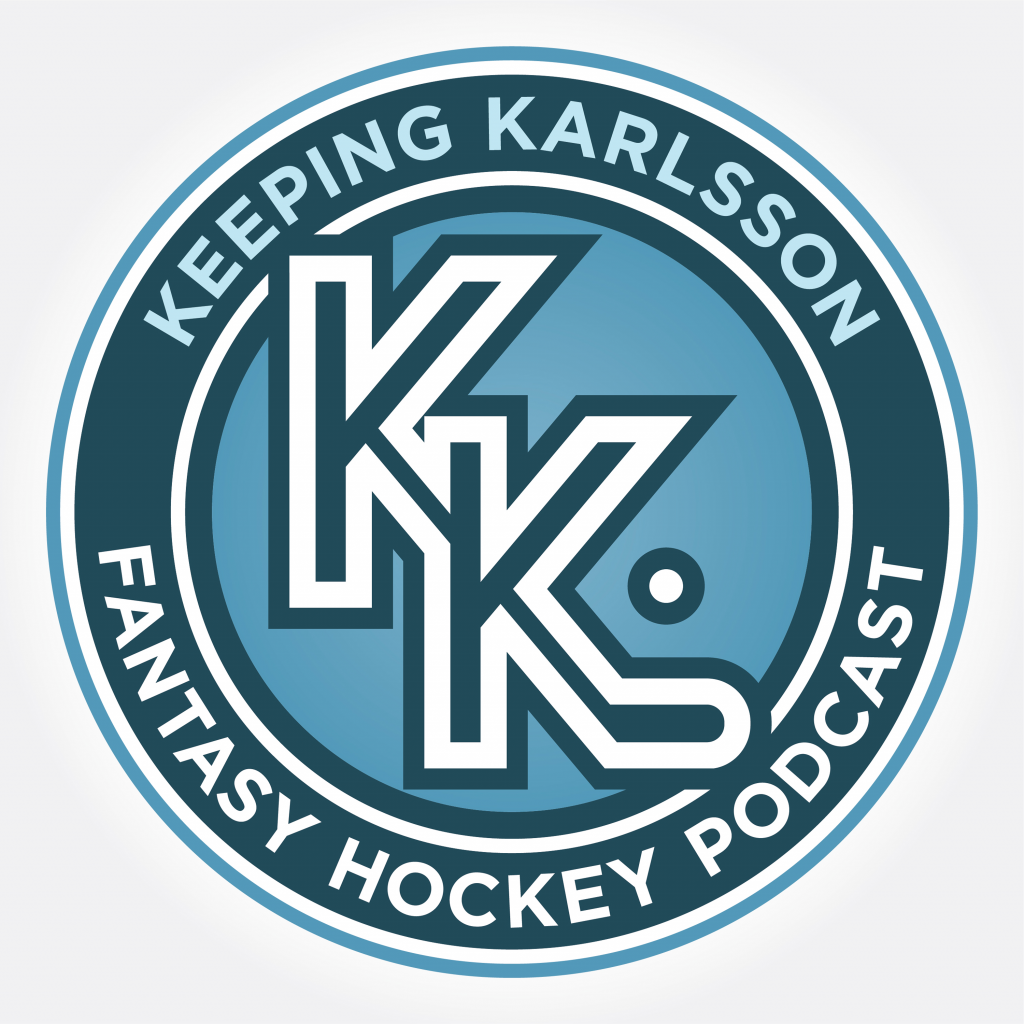This week, we are continuing our MVP series by moving to left wings. I have included a small snippet from the original article below that outlines the process we are using in this series.
'Most Valuable' is a tricky term that is going to be completely dependent on the league specific context. For the purposes of this article, we are going to use standard Yahoo point scoring to calculate fantasy points for each player. This year the stats include goals, assists, power-play points, shots, blocks and (unfortunately) plus/minus. Obviously, this means there might be some general deviations to your league, based on your settings, but it is at least a good starting point. In order to grab all of this data I am exporting the Multi-Category and Big Board Reports for the full season, and doing a bit of rearranging so I can have only the pertinent fields.
The table below contains the top five fantasy producers at the left wing position for the 24-25 season. We start with basic player information on the left (name, position, team) then get into some season stats (games played and Yahoo fantasy points per game). The fantasy points column is using points per game to attempt to consider players who had big changes in value because they missed time.

There may not need to be much more said about Alex Ovechkin, but I am going to say something anyway. At 39 years old, Ovechkin broke the goal scoring record, was the most productive fantasy left wing (on a per game basis), and put up one of his highest point paces since 2010-11. Who knows what next season holds for Ovi, but man what a season he had.
Neither Clayton Keller nor Kyle Connor should really be a surprise on this list as they have been top tier left wings for several years. Both did hit career high point paces in 24-25 though so don't let the limited article space dedicated to them detract from their excellent performances. We will actually hit on Brandon Hagel in a moment, so I wanted to briefly touch on Seth Jarvis here.
Jarvis just completed his second 70(ish)-point season and saw increases across the board eclipsing 19 minutes of average ice time, almost 70% of the team's power-play time, and almost three shots per game. Everything else looks strong too, with reasonable team and personal shooting percentages as well as point participation numbers. Things are looking great for the 23 year old.
I should note a couple of absences from this list as well with no Brady Tkachuk, or Artemi Panarin. Brady saw a little less time on ice overall and so saw a small drop in his shot and hit rates. He also dipped down to a 62-point pace where he had been averaging in the mid-70s over the past three seasons. He was still obviously valuable and even more so in leagues that count his hits, but it was still a bit of a down year.
It is hard to call a 90-point pace disappointing, but 24-25 tied Panarin for his worst pace since 18-19, and it was a 30-point pace drop from 23-24. He also lost out on a lot of the shooting gains he had made in 23-24, though still put up three shots per game. Panarin still ranked 7th on this list so it isn't like he was terrible, but definitely lower than anticipated.
Our next table contains the players who provided the most value once we account for where they were drafted. I have included their ADP data, the fantasy points that were expected given that ADP and then the difference between those numbers.

Anders Lee finished with a 54-point pace, his highest since 2020-21. It was definitely his shot rates that I first noticed during the season, back up to almost three per game, but he also saw over 17 minutes of ice time, and more than 50% of the Islanders' power play time. At the end of the day, he didn't blow the doors off in terms of fantasy production but was a valuable piece that was drafted incredibly late, if at all.
Brandon Hagel has seen pretty dramatic growth over the last several years. In 20-21 he put up a 38-point pace but has increased his output each season until finally reaching the 90-point threshold in 24-25. Alongside that point-production increase we have also seen huge time on ice increases, setting a career high over 20 minutes a night this year. He also saw almost 60% of Tampa's power play, and landed nearly three shots per game, both career highs. The underlying stats look ok,too. Team 5-on-5 shooting percentage is a little high, but his point participation numbers on the power play are very low. If he can be just a little more involved on the power play that could cover any dip at even strength.
For some reason Buffalo insisted on putting Jason Zucker on the top power play for a significant portion of the season. Because of that and a near-career high shooting percentage, Zucker managed a 60-point pace (his highest since 17-18) and was found money for a lot of managers this year. Given he is 33 years old and did see a fair amount of good fortune, it is not guaranteed that this is repeatable, but it was a great run.
Now we move on to the least valuable. These guys all underperformed their draft slot by significant margins.

Dakota Joshua was a late round swing in the best-case scenario here, but didn't really live up to that billing either. In 23-24 he had a very respectable 18 goals over 63 games, but probably more importantly 244 hits. I can see why in some leagues he was worth a shot, a guy who hits a lot who also can score some goals can be valuable. Unfortunately, he did not maintain his time on ice, his shot rates, his 20% shooting, or hit rates (though those were still good). Overall, there was a big drop in potential fantasy production.
Chris Kreider finished with the worst point pace of his career at 36 points. He lost two minutes of overall time on ice, a bit of power-play time, and dropped shot rates. His personal shooting percentage was just fine but he saw a big drop in power-play points. A contributing factor was certainly point participation numbers at even strength and on the power play, which indicates some bounce back might be possible. At 34 though the runway for continued productiveness may be running out.
Jeff Skinner had several productive seasons in Buffalo, so it is logical that he had a reasonable draft position. The question was always going to be his spot in the lineup. If he could consistently line up Connor McDavid or Leon Draisaitl then there was some optimism at least on even strength, but he lost three minutes of overall time on ice, 30% of the team's power play, and did not consistently play either on one of the top two lines or on the top power play. The result was a 33-point pace and a career row shot rate. Like with Kreider age is a significant concern here as well as he is about to turn 33.
Finally, I will wrap the column with a couple of players who provided the most value but generally weren't drafted.

I am not going to dig into each of these players individually as, apart from Warren Foegele, all of them essentially have the same things in common. Dylan Holloway, Aliaksei Protas, Connor McMichael, and Dmitri Voronkov all saw big increases in their overall time on ice, power-play percentage, shot rates, and really broke out in terms of point paces. Foegele is different from the rest as while he did increase his overall time on ice, he did not also see a significant bump in power-play deployment, or shot rates and that contributed to a less impactful change in his overall point production. It was a significant breakout for the other four though and while there is always a bit of a question on first time breakouts there is a lot to like for these guys going forward.
That is all for this week.
Do your part to support organizations working to make hockey for everyone.





 ANA
ANA PHI
PHI VAN
VAN DET
DET BUF
BUF NYR
NYR MIN
MIN PIT
PIT
